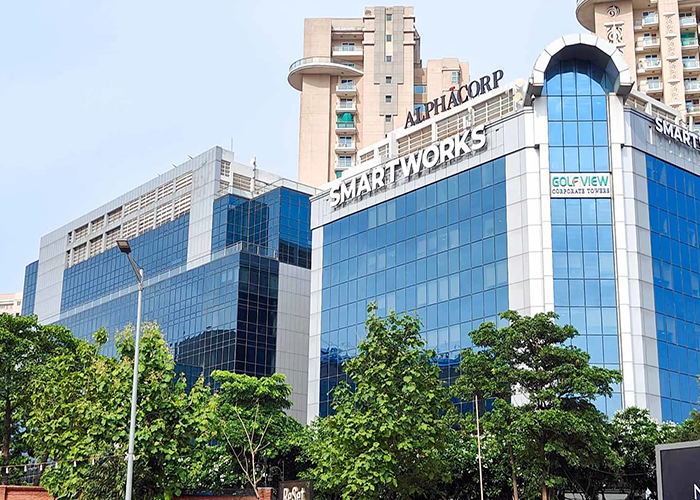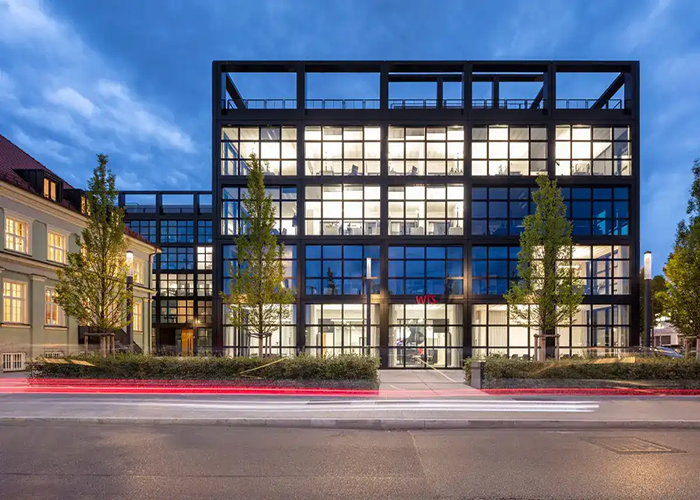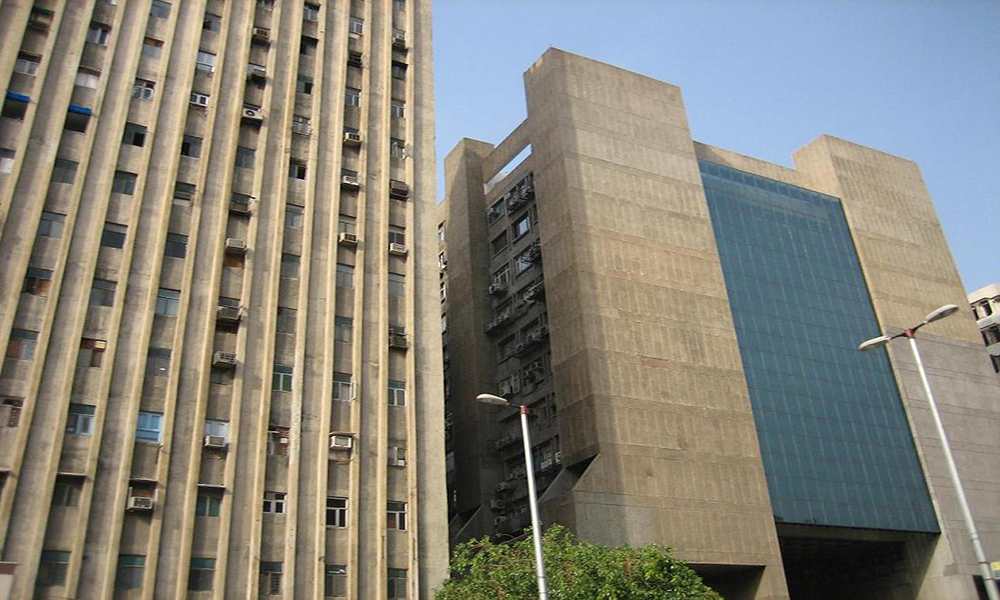Smart Water and Wastewater Solutions for Office Buildings Using STP, ETP, WTP, WWTP, Industrial Systems, and RO Technology

Office buildings have emerged as essential infrastructure in India's economic and urban growth. From tech parks to corporate headquarters, the rise of the service sector has driven large-scale development, especially in cities like Mumbai, Pune, and Nagpur in Maharashtra. These buildings host thousands of employees daily and operate almost round the clock.
The commercial property sector in Maharashtra has rapidly expanded due to business-friendly policies and increasing demand for modern workspaces. With this growth comes the responsibility of managing key utilities, particularly water. Office buildings consume large quantities of water for daily needs, and the pressure on municipal water systems continues to rise. Moreover, with green building certifications becoming common, builders and facility managers are now focusing more on efficient water use and sustainable wastewater management through technologies like STPs and WTPs. The need for innovative infrastructure solutions in this sector has never been more relevant.
Understanding Water Use in Office Buildings for Daily Operations and Environmental Sustainability Goals
Office buildings require a steady water supply to support various functions, from restrooms and pantry services to cleaning and HVAC systems. A multi-story office complex with hundreds or thousands of occupants consumes a lot of water daily. This includes water used for sanitation, drinking, maintenance, fire safety systems, and cooling operations.
Beyond daily consumption, many corporate offices also feature green zones, gardens, and terrace spaces that require regular irrigation. Water is also needed in cafeterias, food courts, and even for charging HVAC cooling towers. As workplaces evolve into high-performance, green-certified buildings, the emphasis is now on minimizing water waste and maximizing efficiency. Therefore, office buildings increasingly opt for recycled water systems and treatment technologies to meet operational and environmental objectives. This not only eases the pressure on municipal supply but also contributes toward corporate sustainability goals and long-term cost savings.
Key Activities in Office Buildings That Lead to the Generation of Wastewater Every Day
In office buildings, wastewater is primarily generated through everyday functions. The most obvious sources include restrooms, where flushing and handwashing account for most of the blackwater generated. Pantry areas and food courts contribute greywater containing detergents, grease, and food particles from dishwashing and cleaning.
"In office buildings, every drop of water supports a productive ecosystem. Whether for hygiene, cooling, or comfort, managing water responsibly reflects a commitment to sustainability. Treating and reusing wastewater is not just an operational choice—it's a forward-thinking approach toward a greener, smarter workplace future."
Additionally, HVAC systems—especially cooling towers—discharge water that contains chemicals and dissolved solids due to continuous cycling and evaporation losses. Office janitorial activities, such as floor cleaning, window washing, and basement maintenance, generate wastewater mixed with chemical cleaners. These waste streams can overload drainage systems or harm the local environment if untreated. Therefore, understanding where wastewater originates within a building is essential for implementing efficient treatment systems. Segregating waste streams at the source and applying suitable treatment helps reduce costs, prevent pollution, and ensure regulatory compliance while supporting the growing emphasis on green and innovative building practices.
Common Wastewater Types Produced by Office Buildings and Their Distinct Composition and Impact
Office buildings typically generate two primary types of wastewater: greywater and blackwater. Greywater comes from non-toilet sources such as sinks, pantries, and cleaning operations. It contains detergents, soap, oils, and small amounts of organic matter. On the other hand, water originates from toilets and urinals and contains human waste, pathogens, and higher organic loads.
Additionally, cooling tower blowdowns from HVAC systems contribute water with high concentrations of total dissolved solids (TDS), anti-corrosive chemicals, and biological contaminants. Depending on the office's scale, cafeteria effluent may also include fats, oils, and grease (FOG). Without treatment, these waste streams pose environmental risks and can lead to penalties for non-compliance. Understanding the characteristics of each wastewater type helps select the right treatment technology combination. Proper categorization and management of wastewater in office buildings support operational hygiene, environmental stewardship, and long-term sustainability.
Processes Used by Office Buildings to Effectively Treat and Manage Daily Wastewater Generation
Office buildings use Sewage Treatment Plants (STPs) to manage on-site wastewater. The process begins with screening and sedimentation to remove physical solids. This is followed by biological treatment using technologies like MBBR (Moving Bed Biofilm Reactor) or SBR (Sequential Batch Reactor) to break down organic pollutants.
After biological treatment, the water undergoes disinfection using UV or chlorination to eliminate pathogens, making it suitable for reuse in flushing, irrigation, and cooling towers. Additional treatment using Grease Traps or Effluent Treatment Plants (ETPs) may be required in buildings with large cafeterias or food courts to handle oily and greasy waste. Regular monitoring and maintenance ensure treated water meets regulatory discharge norms. By integrating wastewater treatment into their infrastructure, office complexes reduce their ecological footprint and dependency on municipal supplies, save costs, and align with sustainability benchmarks like IGBC or LEED.
How Office Buildings Use Modern Technologies for Water Recycling and Closed-Loop Wastewater Systems
Modern office buildings are adopting cutting-edge technologies to treat and reuse wastewater efficiently. Compact STPs equipped with MBR (membrane bioreactor) or MBBR technology offer high-quality treatment in small spaces, ideal for dense urban developments. These systems ensure water is treated to a level fit for flushing, landscaping, and HVAC reuse.
Automation and IoT are increasingly being used to track water quality, monitor plant performance, and alert operators in real-time. Offices with cafeterias and high footfall are deploying grease traps and ETPs to manage oily wastewater effectively. Rainwater harvesting systems are often linked with filtration and storage tanks to reduce freshwater usage. By integrating smart controls and cloud-based dashboards, facility managers can optimize plant efficiency and reduce manual errors. This data-driven approach ensures consistent water recycling and helps commercial spaces reduce operating costs and meet their green building commitments.
Customized Services We Offer for Office Buildings Needing Water and Wastewater Treatment Systems
We specialize in designing, installing, and maintaining customized water and wastewater treatment systems for office buildings of all sizes. Our solutions include STPs, ETPs, WTPs, RO systems, and grease traps tailored to your facility's needs. We assess your daily water consumption and wastewater discharge patterns to recommend the best-fit solution.
Our treatment plants have compact designs, automation options, and modular setups for easy installation in limited spaces. Post-installation, we provide operational training and annual maintenance contracts to ensure long-term system performance. We also assist in securing necessary approvals from environmental authorities. Whether you are managing a single commercial tower or a multi-building tech park, our expertise ensures sustainable, compliant, and efficient water management. We aim to help office buildings transition to more innovative water use while reducing operational risks and costs through reliable, high-performance systems.
Conclusion – Office Building Water Treatment:

Conclusion – Office Building Water Treatment:
As office buildings grow in size and complexity across India and Maharashtra, so does the demand for sustainable utility solutions. With thousands of employees depending on clean water daily and an equally significant amount of wastewater generated, managing water responsibly is no longer optional—it's essential.
From understanding daily water use to identifying waste sources and implementing effective treatment systems, every step matters. Technologies like STPs, ETPs, and intelligent monitoring systems make reusing treated water for non-potable applications easier than ever. This reduces the building's environmental footprint, reduces water bills, and ensures compliance with environmental regulations. With a growing emphasis on ESG practices and green building certifications, wastewater management is now a critical pillar of corporate infrastructure. By partnering with an expert service provider, office complexes can ensure long-term water sustainability and support India's journey toward innovative, green urban development.

